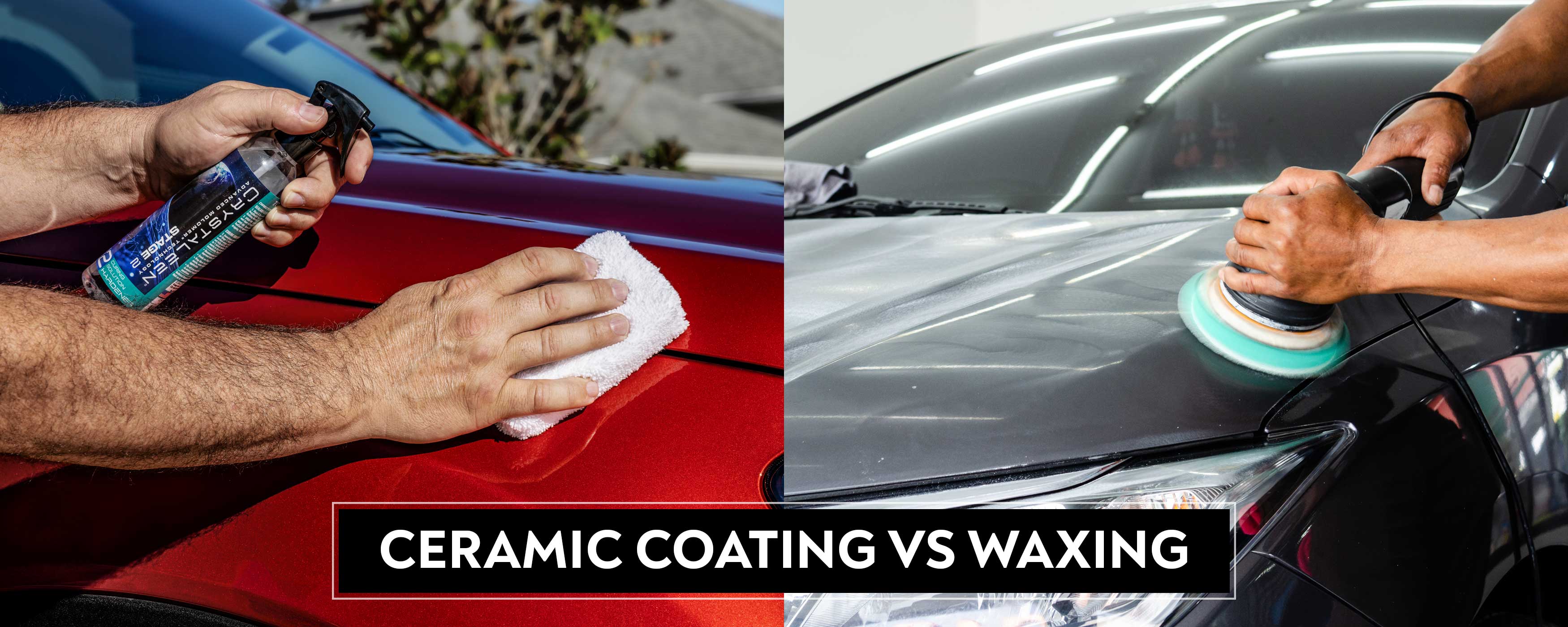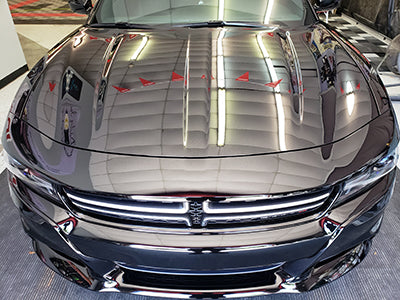Ceramic Coating vs Traditional Wax: Which Offers Better Protection?
Ceramic Coating vs Traditional Wax: Which Offers Better Protection?
Blog Article
Exactly How Ceramic Covering Protects Your Automobile's Paint and Maintains It Looking New
Ceramic finish has actually emerged as an innovative remedy for auto paint protection, offering a powerful barrier against the elements. The outcome is a considerable reduction in paint degradation and a long-lasting aesthetic allure.
What Is Ceramic Finishing?

When used appropriately, ceramic layers develop a semi-permanent bond with the surface area of the vehicle, using superior defense against UV rays, chemical discolorations, and small scrapes - ceramic coating. Unlike traditional wax or sealers that may subside within months, ceramic layers can last for years, depending upon the product and maintenance
The application process entails complete surface preparation, including cleaning, sanitizing, and brightening the paint to make sure ideal adhesion. When the layer is used, it hardens and treatments, causing a hydrophobic surface area that repels grime, dust, and water. This hydrophobic residential or commercial property not only makes the vehicle easier to tidy however also improves the general gloss and quality of the paint, adding to a showroom-quality finish. Consequently, ceramic layer is progressively favored by auto lovers and professionals seeking lasting paint defense.
Benefits of Ceramic Finishing
Why should automobile proprietors take into consideration buying ceramic covering? The advantages of ceramic coating extend much past mere looks, using significant security and longevity for a lorry's paintwork. Among the key advantages is its exceptional resistance to environmental pollutants. Ceramic finishings develop a hydrophobic surface area, enabling water, dust, and crud to slide off quickly, reducing the regularity of washing and the requirement for standard waxes.
Furthermore, ceramic finishes provide a durable shield against UV rays, which can cause paint to oxidize and fade over time. This protective layer aids gloss and keep the vibrancy of the car's color, guaranteeing it looks brand-new for many years. Ceramic coatings are understood for their sturdiness; they can last several years with proper maintenance, making them a cost-efficient investment in the lengthy run (ceramic coating).
Another substantial benefit is the convenience of maintenance they provide. With a ceramic-coated surface area, small scrapes and swirl marks are less most likely to occur, and when they do, they are simpler to rub out. In general, the financial investment in ceramic coating not only improves the visual allure of an automobile but also offers long-term protection that can save vehicle proprietors money and time.
Exactly How Ceramic Finish Works
Understanding how ceramic finish works is vital for cars and truck proprietors considering this safety remedy for their vehicle's paint. Ceramic finishes are composed of advanced nanotechnology that creates a sturdy, protective layer over the surface of the cars and truck's paint. When applied, these fluid polymers bond chemically with the manufacturing facility paint, producing a solid, hydrophobic layer that repels water, dust, and other impurities.
The main component in ceramic layers is silicon dioxide (SiO2), which supplies the covering's firmness and resistance to UV chemicals, rays, and scratches. This molecular bonding creates a safety guard that is significantly tougher than typical wax or sealants, offering resilient security. The hydrophobic nature of the finish suggests that water beads up and rolls off the surface area, taking dust and grime with it, thus making the lorry less complicated to cleanse.

Application Process of Ceramic Layer
The application procedure of ceramic finishing calls for mindful preparation and focus to information to ensure optimum results. Initially, the vehicle should go through an extensive cleaning to get rid of dirt, crud, and contaminants. This action commonly includes a clay bar therapy to remove ingrained particles that could jeopardize the coating's attachment.
Following the cleansing, a detailed evaluation of the paint surface area is essential. Any type of existing flaws, such as scratches or swirl marks, need to be addressed via sprucing up. This ensures a reflective and smooth surface, boosting the last appearance of the ceramic coating.
When the paint is prepared, the ceramic finish is applied in a controlled setting to stop dirt and debris from contaminating the surface. Making use of a specialized applicator, the layer is equally dispersed in areas, enabling proper bonding with the paint. It is crucial to adhere to the producer's guidelines pertaining to treating times and environmental problems during application.
After the application, a curing duration is essential for the finishing to accomplish its complete protective homes. This process can vary in period based upon the specific item made use of, yet it is vital for accomplishing the desired longevity and long life of the ceramic layer.
Upkeep Tips for Ceramic Layer
Preserving a ceramic Get More Information finishing is necessary for protecting its safety buildings and guaranteeing the longevity of your automobile's outside. To achieve optimum outcomes, routine maintenance is essential. Begin by cleaning your automobile utilizing a pH-neutral auto shampoo and a soft microfiber wash glove to prevent scraping the surface area. Prevent automated cars and truck cleans, as their harsh chemicals and brushes can degrade the coating.
After washing, rinse thoroughly and dry the automobile with a tidy microfiber towel to stop water places. It's advisable to carry out maintenance laundries every two weeks to maintain the covering in excellent problem.
In addition, consider using a dedicated ceramic covering booster or spray sealant every couple of months. These products boost the hydrophobic properties and add an additional layer of security.
Evaluate your lorry consistently for any type of impurities such as tree sap, bird droppings, or roadway tar, and eliminate them quickly making use of a clay bar if required. Park your cars and truck in a garage or utilize an auto cover to decrease exposure to extreme environmental aspects. ceramic coating. By following these maintenance pointers, you can guarantee that your ceramic layer remains efficient and your cars and truck keeps its showroom sparkle
Conclusion
Finally, ceramic finishing works as an important safety procedure for automobile paint, using various advantages such as boosted durability and resistance to ecological dangers. The advanced chemical bonding procedure guarantees a durable guard against impurities, UV rays, and oxidation, thereby protecting the automobile's visual charm. Appropriate application and upkeep are important for optimizing the effectiveness of ceramic finishings, ultimately adding to a vehicle's durability and keeping a showroom-quality coating gradually.
Ceramic layer is a sophisticated safety remedy designed to preserve the look and boost of car paint. Ceramic finishing is increasingly favored by automobile enthusiasts and specialists seeking long-lasting paint security.
Understanding how ceramic coating works is essential for vehicle proprietors considering this safety option for their automobile's paint. Ceramic finishings are composed of advanced nanotechnology that creates a durable, safety layer over the surface check area of the automobile's paint.The primary component in ceramic coverings is silicon dioxide (SiO2), which supplies the covering's firmness and resistance to UV scrapes, rays, and chemicals.
Report this page